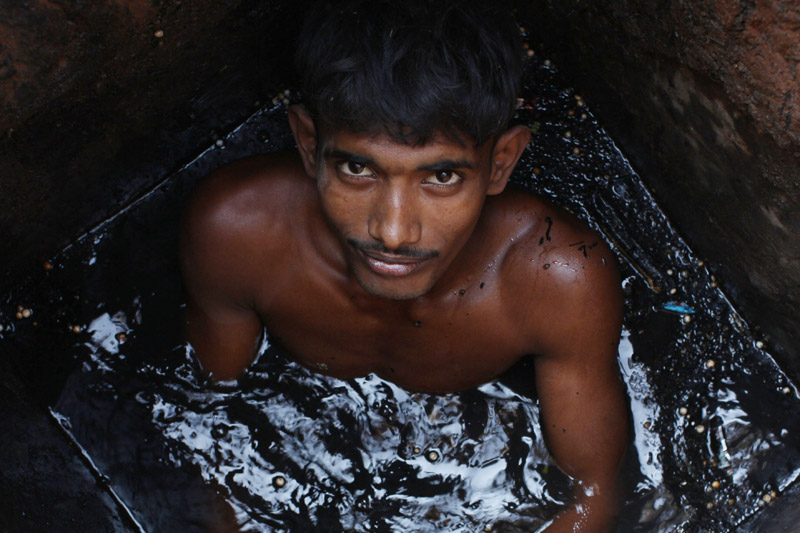With India's steadily growing economy and burgeoning middle class, millions of people there are now able to afford the latest smartphones, laptops, and tablets.
There's an environmental dark side to this burgeoning consumer culture. Technology—mobile technology in particular—has a fast-burn life cycle that reduces powerful, must-have devices to near-useless relics within a few years. But because many old electronics are rich in certain metals, like copper and gold, they're too valuable to throw away, especially in a society where the annual median income is still only $1,500 (U.S.).
But harvesting e-waste, as discarded electronics are called, can be dangerous. Toxins in a discarded laptop, for instance, include cancer-causing heavy metals and hormone-disrupting flame retardants.
To get copper out of tangled wire, workers simply burn it and try to dodge the dangerous fumes. Circuit boards, meanwhile, are bathed in cyanide to release gold, with the poisonous residue dumped in drains and rivers.
"E-waste is a cocktail of toxic chemicals like lead, mercury, cadmium, and brominated flame retardants," says Priti Mahesh, chief program coordinator for Toxics Link, a Delhi-based environmental group. "Some of these are known to cause not just short-term health problems, but also to damage the brain, nervous system, and reproductive system in the long term."
For decades, the solution in wealthy nations had been to send e-waste to developing countries like China and India, where environmental enforcement is relatively lax. In recent years, however, international treaties and country-specific legislation has tamped down the toxic flow. Tech manufacturers in the European Union, for instance, must plan for the life cycles of their devices from manufacture all the way to recycling.
The United States hasn't gone that far, but it is imposing stiff penalties for companies caught illegally sending toxic waste overseas. In 2013, executives at a Colorado recycling firm received prison sentences for exporting toxic e-waste.
As a result of the clampdown, the United Nations estimated in 2012 that developing countries for the first time produced more e-waste than developed ones. In India, declining imports of used electronics from Western nations are quickly being replaced by domestic e-waste, which accounts for nearly one million tons per year, according to official estimates.
India is taking tentative steps to try to limit the damage caused by unregulated recycling, but regulations that came into effect in 2012 aren't strongly enforced, Mahesh says.
Beijing-based photographer Sean Gallagher set out to document the electronic waste trade to show the environmental and pollution-based links between East and West.
"When I heard about the issue of e-waste being sent to developing nations such as India, I wanted to follow the trail of waste and see where it led me," Gallagher says. "I was surprised to find that it led me to the small villages outside of Kolkata where the processing of the waste is done by women and children in a rural setting."




















